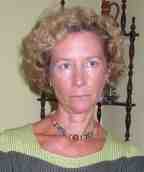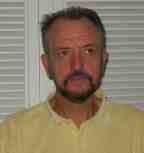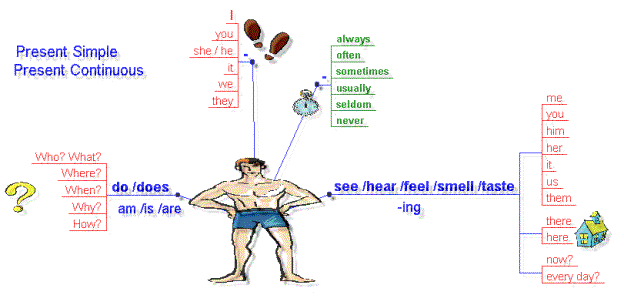 |
 |
Learning Maps
by
Maite Galán & Tom Maguire
 |
 |
This article will show you how people are
enabling teaching and learning through two tools : concept mapping and body
maps. All that you require to gain maximum profit is an open mind,
determination to experiment with these practical examples and the decision of
which is most suitable for you. So open your parachute and dive into mapping.
Joseph
Novak researches learning models in Cornell University. His research in
education has led him to conclude that that our knowledge is not so much
discovered as crafted. He describes the traditional classroom pedagogy of
showing > telling > repeating as "conceptually opaque"
education, suggesting instead the alternative of a constructivist approach he
calls "conceptually transparent". This is where students build
knowledge by relating what they are learning to their existing knowledge.
According to Novak this act of crafting knowledge is what delivers the
empowering effect of learning. He proposes a simple tool to help craft
knowledge: the concept map.
Concept
mapping is based on a learning model proposed by David Ausubel
The
other model Novak uses defines human memory not as a single "vessel"
to be filled, but rather a complex set of interrelated memory systems. He says
that knowledge is incorporated into long-term memory through interaction with
the short-term memory. All incoming information is organized and processed in
the short-term memory by interaction with knowledge in long-term memory.
However, the short-term memory can only process small number (five to nine) of
psychological units at any one moment. This means that relating two or three
concepts at the same time is about the limit of its capacity. Therefore,
structuring large bodies of knowledge while new information is being received
requires an orderly sequence of interactions between working memory and
long-term memory. Novak believes that one of the reasons concept mapping is so
powerful for the facilitation of meaningful learning is that it serves as a
bridge between the two memories. He considers that the brain organizes
knowledge in hierarchical frameworks and thinks that any learning approaches
that facilitate this process significantly, such as the concept map, enhance
the learning capability of all learners.
In
order to construct good concept maps it is important to begin with a topic
that is very familiar to the person constructing the map. Once a topic has
been selected, the next step is to identify the key concepts that apply to it.
These would shoot out from the central topic, as in the example below,
designed using the computer software program available at http://cmap.coginst.uwf.edu.

The computer program allows easy moving of groups of concepts and links to restructure the map. You can change the size and font to enhance the concept map and get a printout or image file that you can share with collaborators. If you prefer to work on paper, post-its make flexible concept boxes to construct a preliminary map. They also allow a group to work on a whiteboard and to move concepts around as ideas and relationships change.
It
is important to help students recognize that all concepts are in some way
related to one another. This explicit relationship and the possibility
of cross-linking the ideas is what make concept maps different in format from
mind maps. You must be selective in identifying cross-links, and be as precise
as possible in identifying the linking words that connect concepts. In
addition, you should avoid using many words in the boxes since this usually
indicates that a whole subsection of the map could be constructed from the
statement in the box.
Novak
says his students often comment that it is hard to add linking words onto
their concept map. This is because they only poorly understand the
relationship between the concepts and it is the linking words that specify
this relationship. Once students begin to focus on good linking words and
identify good cross-links, they can see how every concept could be related to
every other concept. This also produces some frustration, and they must choose
to identify the most prominent and most useful cross-links. This process
involves high levels of ability evaluate and synthesise information. The
assessment of this type of performance makes concept mapping a very powerful
evaluation tool for the teacher looking to train students in skills for the
future.
Novak
has also found that concept maps facilitate cooperative learning. He says that
there is a growing body of research that shows that when students work in
small groups and cooperate in learning subject matter, positive cognitive and
affective outcomes result. In his work with both teachers and students, small
groups working cooperatively to construct concept maps have proven to be
useful in many contexts.
A
different type of map is the body map. It is inspired by the work of Anne
Dwyer, a freelance teacher and educational consultant in Barcelona. Anne
believes in using parts of the body as memory pegs for learning English
grammar. The idea is that if learners - especially young learners - can
associate grammar structures with body positions then they can effectively
grasp the grammar more easily.
We
have experimented with Dwyer’s idea and found that you can present grammar
structures simply and clearly using her scheme. Here is an example of a
presentation of the differences between the Present Simple and the Continuous
tenses which we used in class:

The above map was made using Mind Manager, which has advantages and inconveniences. The principle advantage is clarity but Dwyer’s original idea uses the five fingers of the right hand to enumerate the Wh? words and three fingers of the left hand to distinguish between the object pronouns, the adverbs of time and those of place. Mind manager doesn’t allow us to reproduce the finger picture within the doll drawing but we have used it in class on the blackboard. The left hand questions look like this:

This representation proved to be immediately
comprehensible to students and they were able to create correct sentences
without hesitation using the map. The picture also helped us to explain the
collocation of frequency adverbs in a minimum of words since you can
immediately see where they are to be placed. Above all the map injected an
element of fun to learning grammar and pupils welcomed the reappearance of “the
doll” as they came to call it.
This style of representation is also a boost for
memory. Each time you present a new grammar point using the same map you are
really teaching students how to link what they already know with the new
material, thus enabling them to remember it better. This gives them a ready
reference when it comes to speaking or writing. If you help them transfer the
picture to their own bodies they can remind themselves of the grammar by
physically carrying the reference around with them, inscribed in their own
fingers and trunk. Through the stability of the map students will also
gradually grasp a sense of the underlying unity of structure of the language.
We began this
article comparing your mind to a parachute - it works only when it is open.
Mind mapping is an effective tool for learning, but learning needs an open
mind to progress. This implies trying things out, which is precisely what we
invite you to do: try it and see whether it works for you. We also wish you a
happy flight with mind mapping.
Mind
Maps™ is the creation of Tony Buzan.
You may find out more about mindmapping at
Biodata:
Maite Galán has a degree in Philology. She works as a language teacher in a high school and has 26 years teaching experience in Spain and France. She is a consultant for McGill University, Canada, in reading material for foreign language students.
Website: www.xtec.es/~tgalan
E-mail: tgalan@pie.xtec.es
Tom Maguire has a BA (English), M-ès-Lettres (French) and Philology degree (Spain). He has 28 years experience in TEFL in France and Spain. At present he teaches EFL in a Spanish State high school near Barcelona and is participating in a pioneering website to give academic support to students, teachers and parents (www.edu365.com). He is interested in using Neuro-linguistic Programming (Nlp) to enhance Learning to Learn strategies. He is a Master Practitioner in Nlp and manages e-groups for those interested in Nlp in Education and S.E.A.L.
Website: www.xtec.es/~jmaguire
E-mail: jmaguire@pie.xtec.es